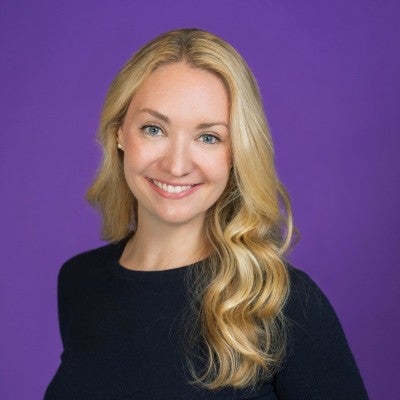When Boston-based hotelier Sheraton Corp. launched its Club International paid loyalty club in 1986, many doubted that consumers would pay a $25 annual membership fee when they could join rival Marriott’s program for free.
Travelers were less skeptical. Club International (which was absorbed into Sheraton parent Starwood’s umbrella club in 1999) promised customers exclusive offers and service, plus constant communication with the chain. As the program grew, so did loyalty — to the tune of 70-percent renewal bookings among members.
Sometimes, fee can beat free.
It’s a gutsy move to try and get a populace raised on freebies — a group already joining numerous free loyalty clubs — to open their wallets and pay for privileges. But the marketers behind some of the industry’s largest paid programs claim that their breed of loyalty club can achieve branding goals more quickly than its cost-less brethren, create a tighter bond with customers, and along the way alleviate a pile of marketing expenses.
“If you’re giving enough back to consumers, you can collect a fee. But not every brand can pull this type of program off,” says Richard Barlow, president of Cincinnati-based loyalty agency Frequency Marketing. “It requires skill, investment, and time.”
No company has put all three of those factors to work more than New York City-based American Express. The financial-services giant this month celebrates the 10th birthday of Membership Rewards. Introduced as a frequent-flier mileage initiative called Membership Miles in 1991, the program relaunched in 1995 under its current moniker and began bestowing points redeemable for just about anything — airline miles, hotel stays, merchandise, and travel packages. Awards run the gamut from sensible to outrageous: One million points scores a three-month lease on a Mustang convertible.
The Membership Rewards ranks have since swelled, and now boast roughly eight million people in 30 nations and about four million in the U.S. Members pay roughly $40 per year each in addition to their annual card fees, and cough up another $15 to link memberships to additional personal or corporate AmEx accounts. The company supports with ongoing direct-mail and e-mail communication with members, most of whom have been in the program for more than five years, and regularly offers promotions that double points on charges originating from specific retailers such as warehouse clubs or gas stations. This summer, Membership Rewards gets an enhanced presence online.
“We try to be as customer-centric as we can,” says Susan Sobbitt, AmEx senior vp-loyalty rewards and alliance development. “We’ve put together a program that’s hard to find anywhere else. The value is strong enough that people don’t mind paying for it.”
$17.59 for Your Thoughts
There are a surprising number of paid programs. Ann Arbor, MI-based Waldenbooks charges members a one-time fee that lets them accrue points on all future purchases. Travelocity, Fort Worth, TX, offers a pair of paid programs that score members discounts with partners and access to exclusive deals. General Nutrition Centers, Pittsburgh, PA, has 3.5 million Gold members who’ve paid to gain access to “20-Percent Off Bonus Tuesdays” in the first week of every month. Los Angeles-based Walt Disney Co.’s vacation arm allows members to accrue points and redeem them for travel rewards.
Paid clubs vary, but generally share similar ingredients. Most are pitched to top-tier customers (high spenders or heavy users), offer richer rewards than free programs, and are usually the product of highly recognized brands. If utilized in the right way, they can “get the right consumer to get involved while weeding out the browsers,” says Stephen Colanero, vp-membership services with Blockbuster, Inc., Dallas.
Blockbuster mines its shopper ranks through Blockbuster Rewards, a paid effort launched in early 1999. For a $9.95 annual fee, shoppers score a free movie rental every month, another free flick for every five rentals, and additional freebies based on purchases made Monday through Wednesday. Databases track behavior and reward customers automatically at the point of sale. Blockbuster uses the fee to lure high-frequency renters and discourage lower-tier customers who don’t rent often and therefore aren’t worth the effort. “If this program were free, everybody would join,” says Colanero.
Blockbuster Rewards, the fastest-growing paid program in history, now has ties to six million members, about 4.5 million in the core program and 1.4 million whose frequent visits (125 rentals a year or more) let them advance to a Gold level providing greater rewards. Blockbuster this summer is trying to boost new sign-ups by offering a free three-month trial period. Additional program enhancements are expected early next year. The effort is managed in-house.
Stamford-based Guinness Bass Import Co. is the newest brand to try a paid program on for size. The company earlier this year introduced the 1759 Society (named after the year the brew debuted), a club beer fanatics not only have to pay to join but must earn their way into. Pitched to the segment of Guinness drinks who wear their beer preference as a badge of honor, members gain admission by first passing a five-question test at guinness.com, then paying a one-time $17.59 fee. “Adding the payment factor helps keep out the riffraff so we can focus on our loyals,” says Guinness brand strategy manager Leslie Arcesi. “With the right program, the right customer will forget they’ve paid once they’ve paid.”
Positioned in marketing collateral as “a select fellowship of loyal Guinness drinkers,” 1759 provides an initial kit containing free apparel, brass keychains, certified membership cards, and access to an exclusive Web site. Members then get periodic offers for special merchandise and travel packages. (Those who buy one available trip to the Emerald Isle receive logoed apparel when they board the plane.)
About 4,300 stout-hearted consumers have signed up since the Society’s soft launch, which was supported by parties in key markets, P-O-P, and online efforts. Colangelo Synergy Marketing, Darien, CT, handles.
Going Dutch
Paid programs engender a greater influence on behavior, proponents say. “When somebody pays to join a program, it’s in their best interest to participate,” says Blockbuster’s Colanero. “The consumer feels tied to the brand and begins to step up his spend.”
Once customers pay for a membership, they turn their personal financial investment into a heightened brand affinity. “People subscribe and then act differently because of their membership,” says AmEx’s Sobbitt. “They spend more and have attrition rates lower than regular customers.”
Those fees also bring in incremental revenue that allows for rewards and brand-to-customer communication that otherwise might not be financially feasible. They also help cover the costs of administration and maintenance. American Express regularly sends glossy catalogs filled with new rewards, member updates, and quarterly point summaries. Blockbuster ships monthly newsletters and free movie coupons to Rewards customers. Guinness uses e-mail to stay in constant touch with the Society and is considering snail-mail as well.
How much should the fee be? Test, test, and test, says Barlow. “Pick the right price point related to the rewards and don’t get greedy,” he advises.
“These programs are meant for your best customers, so every ounce of them has to be solid,” says AmEx’s Sobbitt.
After all, they are paying for it.



